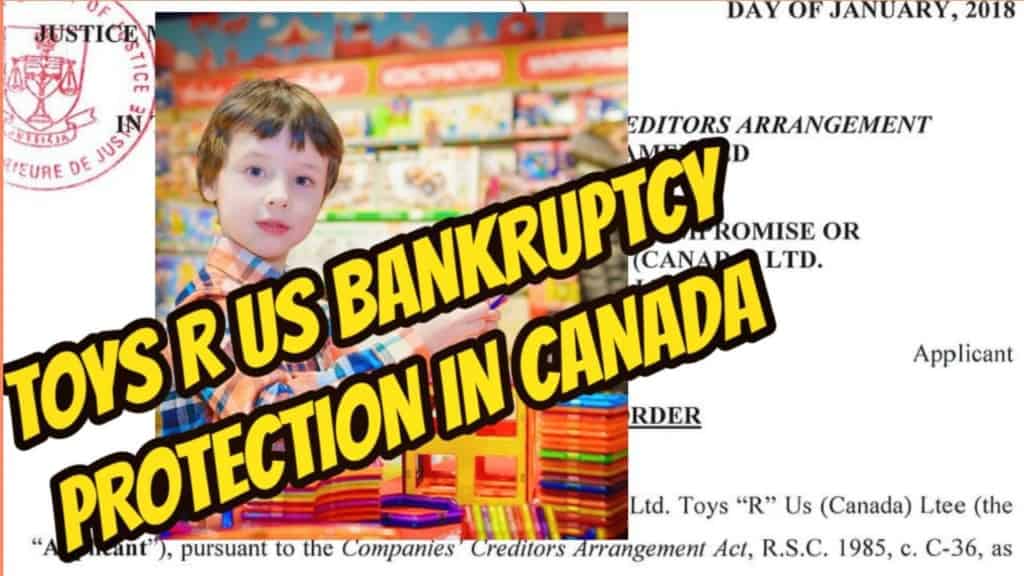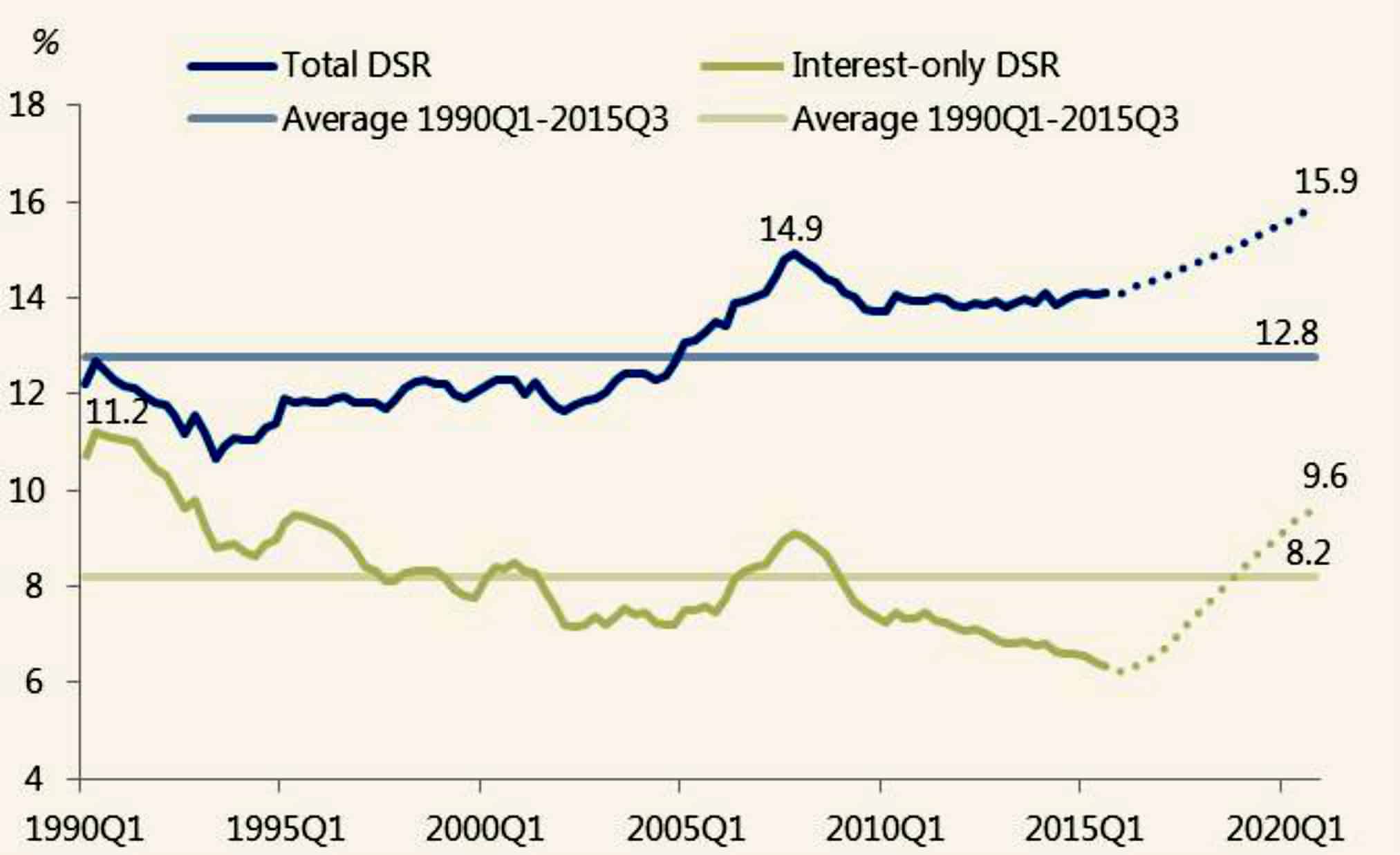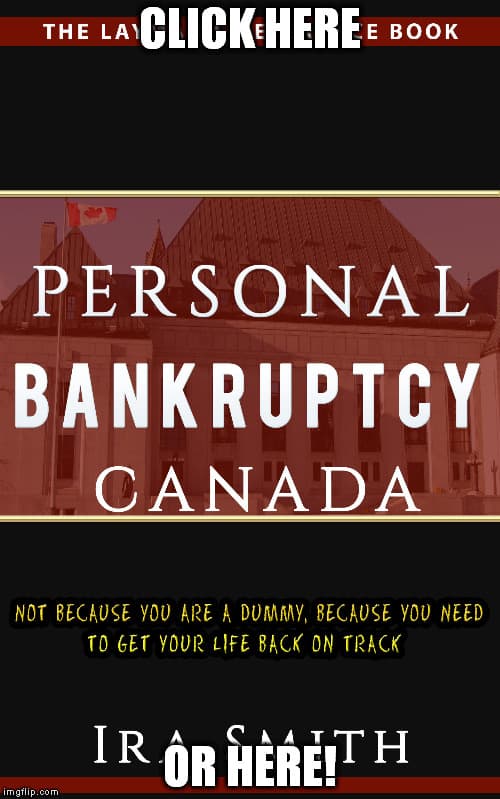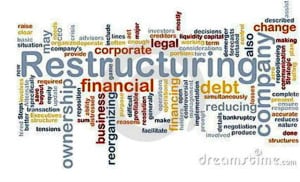
Toys R Us bankruptcy protection in Canada: Introduction
I want to tell you about a recent Ontario Court decision about the claims process approved in the Toys “R” Us (Canada) Ltd. and Toys “R” Us (Canada) Ltee (Toys R Us) bankruptcy protection proceedings. The Toys R Us bankruptcy protection in Canada began with the Court making the Initial Order on September 19, 2017. This Initial Order was made under the Companies’ Creditors Arrangement Act, R.S.C. 1985, c. C-36, as amended (CCAA).
On January 25, 2018, the Toys R Us bankruptcy lawyers attended in Court. There was a motion before the Court to extend the time that Toys “R” Us remains under bankruptcy protection to try to restructure. The motion was also for the Court to approve a draft claims process to quantify the outstanding creditor claims.
Toys R Us bankruptcy protection in Canada: The normal claims process
It is the claims procedure which while not novel, is also not regularly seen. That is what I want to talk about.
In a bankruptcy regulated by the provisions of the Bankruptcy and Insolvency Act, RSC 1985, c.B-3 (BIA), creditors are required to prove their claims independently. They do so by providing to the trustee in bankruptcy sworn proof of claim forms that are accompanied by supporting invoices and other pertinent documents. The detailed treatment for creditor claims to be proven and counted is not set out in the CCAA like it is in the BIA.
The Court routinely grants claims procedure orders under the Court’s general powers under ss. 11 and 12 of the CCAA. Claims process orders generally involve developing a technique to interact with all the creditors. This is so they can file their claims. It normally creates a process to communicate to (potential) creditors. It tells them that there is a process they must follow to prove their claims by a specific date.
Toys R Us bankruptcy protection in Canada: Why do we even need a claims process?
The claims process includes an opportunity for the company under restructuring proceedings, or its representative, to check all claims. The Monitor, or its representative, can disallow creditors’ claims, either in whole or in part. The claims procedure establishes an adjudication mechanism. If claims are not agreed upon and cannot be settled by negotiation, then the adjudication process begins. This could be either in court or first by arbitration. Decisions on the claims of creditors are then subject to an appeal to the Court.
Claims procedure orders will usually also set a claims bar date. Claims will not be accepted after this date. it is necessary to have a cut off to give the right numbers for voting and distribution purposes. Late claims won’t be allowed. In this way the Monitor achieves finality.
Toys R Us bankruptcy protection in Canada: Who has the most up to date books and records?
Most large businesses, including Toys R Us, have readily ascertainable payables outstanding. Sophisticated electronic systems carefully track these amounts, supervised and reviewed by the company’s senior financial staff. The electronic systems not only track purchases and payments, but also the many vendor allowances which are offsets to the accounts payable.
Such offsets include:
- guaranteed sale provisions, which means if the product does not sell within a specific period, Toys R Us can either return the unsold items to the vendor, or take massive discounts against amounts owing for such products;
- early payment discounts, promotional allowances, warranty fees, co-op/marketing fees and defect fees; and
- shipping and warehousing fees
So for large companies like Toys R Us, the vendor will most likely be reconciling their books to what the company shows on its books net of the various offsets.
Toys R Us bankruptcy protection in Canada: The recommended claims procedure
The recommendation to the Court was for a different type of claims process. As indicated above, the process required by the BIA is a positive one. It requires each creditor to prove the state of its outstanding claims by submitting a sworn proof of claim backed up by invoices.
The draft form of claims process submitted to the Court in the Toys R Us bankruptcy protection in Canada proceedings was a different one. It proposed to list creditor claims from the company’s books and records and to provide each known creditor with a simple claim statement. The statement would set out the amount of the respective creditor’s claim recognized by the company. If a creditor agrees with the amount that the company says it owes, the creditor need do nothing and the listed claim will become the final proven claim at the claims bar date. I call this a negative claims process.
Creditors who disagree with the amounts set out in their claims statement can file a dispute notice with the Monitor by the claims bar date to begin a review process.

Toys R Us bankruptcy protection in Canada: Advantages of the negative option
This negative option has certain advantages in companies such as Toys R Us. These advantages include:
- eliminating the need for filing proofs of claim and supporting evidence in the majority of cases;
- guarantees that known claims won’t lose out if a certain percentage of creditors to fail to file their claims on a timely basis; and
- making the claims process streamlined; and
- making the process easier for recognizing and counting all known creditor claims
Toys R Us bankruptcy protection in Canada: The negative option approved by the Court
The proposed claims process met the needs of the Court to ensure that any claims procedure is both fair and reasonable. The negative option claims process proposed in the Toys R Us case met the needs of the Court. The Court approved the negative claims process in the Order dated January 25, 2018.
Toys R Us bankruptcy protection in Canada: Does your company require restructuring?
Your company may not be as large as Toys R US, but it is the most important one to you. Your company may be facing financial challenges, and you have tried everything you can think of to solve the problems. But the red ink still flows. Many families rely on you and your company to continue for their survival. You have invested your money, your blood, sweat and tears in your company, and want to do everything possible to save it.
If you find your company in this situation, then you need the help of a professional trustee immediately. Call Ira Smith Trustee & Receiver Inc. If we consult with you early, we could develop a restructuring and turnaround strategy. By doing this your business will once again thrive. It may not be as complex as the Toys R Us bankruptcy protection process in Canada, but it is the most significant one for you.
Our approach for every person and company is to develop an outcome where Starting Over, Starting Now takes place. You’re just one telephone call away from taking the important actions to return to leading a healthy, balanced, and stress free life.
Contact the Ira Smith Team today.










 The television air waves are clogged with
The television air waves are clogged with 
